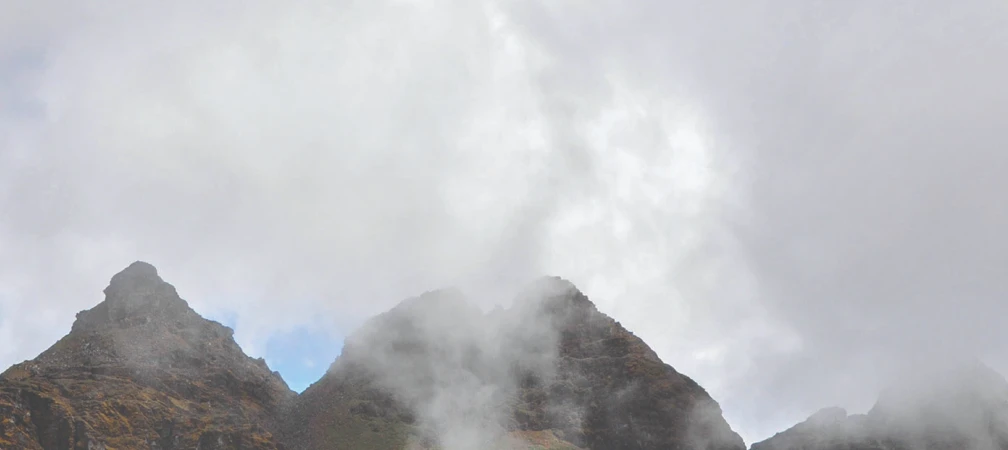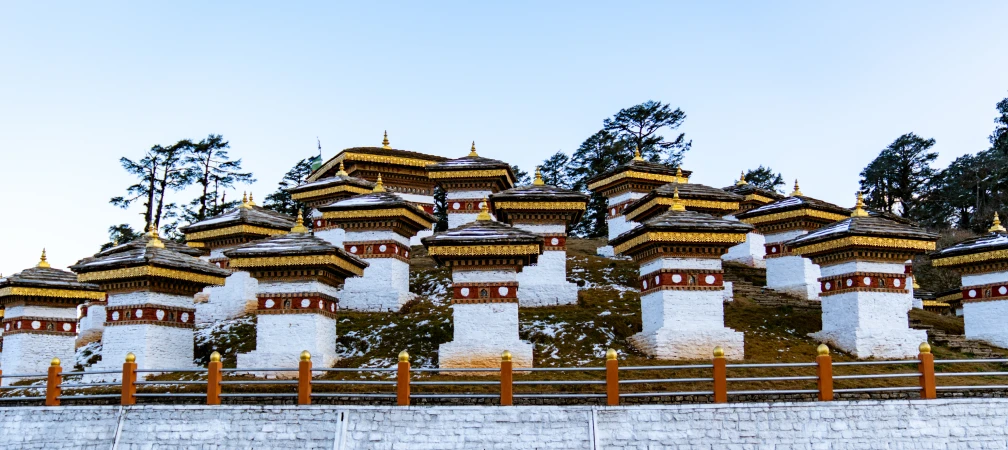The four-day Druk Path Trek is Bhutan’s most popular trek, combining breathtaking natural beauty with rich cultural experiences. Winding through blue pine forests, across high mountain ridges, and past pristine alpine lakes, the trail also leads to ancient lhakhangs (temples), historic dzongs (fortresses), and traditional villages.
Considered a moderately easy hike, the trek features short distances between campsites, making it accessible to most hikers. Along the way, you’ll pass through fragrant fir forests, blue pine groves, and vibrant dwarf rhododendron shrubs, with elevations ranging from 2,400 to 4,200 meters. A highlight of the journey is Jimiling Lake, where crystal-clear waters shimmer beneath the Himalayan sky—home to some of the largest trout you’ll ever see.
The trek also rewards adventurers with awe-inspiring views of Mt. Gangkar Puensum, the world’s highest unclimbed peak. For the best experience, plan your trek between March-June (spring blooms) or September-November (clear autumn skies).
Day 1: Arrive in Paro
- You’ll land at Paro Airport, where a representative will greet you and take you to your hotel.
- Rest and spend the night in Paro.
Day 2: Explore Paro
- Visit Drukgyel Dzong, an old fortress built to celebrate a victory over Tibetan invaders. Though partly ruined, it’s still impressive. On clear days, you’ll see Mt. Chomolhari in the distance.
- Stop by a traditional Bhutanese village house.
- Explore Kyichu Lhakhang, one of Bhutan’s oldest and holiest temples.
- Visit the National Museum (housed in an old watchtower) and Rinpung Dzong, a beautiful fortress-monastery.
- Overnight in Paro.
Day 3: Trek to Jele Dzong (8km, 3 hours)
- Start with a short but steep climb to Jele Dzong (3,400m).
- Enjoy views of Paro Valley and snowy mountains (weather permitting).
- The dzong is mostly in ruins, but there’s a small temple with a Buddha statue.
- Camp overnight near the pass.
Day 4: Trek to Jangchulakha (10km, 3-4 hours)
- Begin with a 1.5-hour climb, then a gentler hike through forests of rhododendrons and pine.
- If the sky is clear, you might see Mt. Chomolhari and hear monal pheasants calling.
- Yak herders sometimes camp nearby.
- Overnight in camp.
Day 5: Trek to Jimilangtsho Lake (11km, 4 hours)
- Walk along a ridge with amazing mountain and valley views.
- See Jichu Drake (6,989m), the sacred mountain protecting Paro.
- Camp by Jimilangtsho Lake, known for its huge trout.
- Overnight in camp.
Day 6: Trek to Simkota Lake (11km, 4 hours)
- Hike through dwarf rhododendron forests and past Janetsho Lake.
- You might meet yak herders and see their camps.
- Camp near Simkota Lake—try fishing for trout!
- Overnight in camp.
Day 7: Trek to Phajoding (10km, 4 hours)
- Start with a steady climb—if the weather’s good, you’ll see Mt. Gangkar Puensum, the world’s highest unclimbed peak.
- Descend through juniper forests to Phajoding, where you’ll stay in a simple lodge or camp.
Day 8: Trek to Thimphu (5km, 3 hours)
- An easy downhill walk through blue pine forests to Thimphu, Bhutan’s capital.
- Free afternoon to relax.
- Overnight in a Thimphu hotel.
Day 9: Day Trip to Punakha & Wangdue
- Drive over Dochu-La Pass (3,088m) for stunning mountain views.
- Visit Punakha Dzong, a grand fortress at the meeting point of two rivers.
- Stop at Wangdue Dzong and explore the local market.
- Return to Thimphu for the night.
Day 10: Thimphu Sightseeing
- Visit highlights like:
- National Memorial Chorten (a peaceful stupa).
- Tashichho Dzong (Bhutan’s majestic government fortress).
- Handicraft shops for souvenirs.
- The Painting School (where students learn traditional arts).
- National Library (home to ancient Buddhist texts).
- Evening drive back to Paro.
- Overnight in Paro.
Day 11: Depart Paro
- Early breakfast, then transfer to the airport for your flight home.


